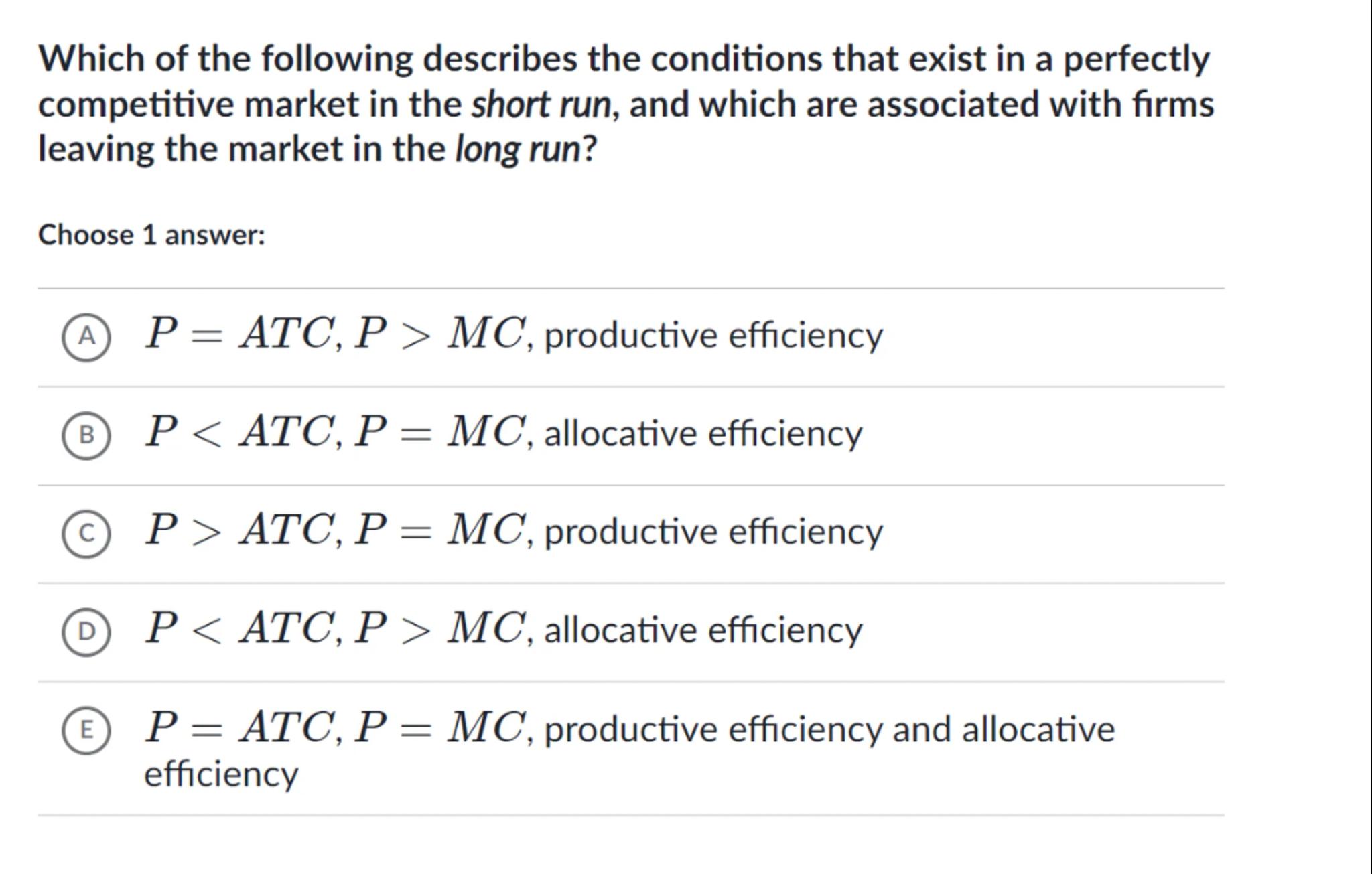
Sia

Question
Microeconomics
Posted over 1 year ago
Which of the following describes the conditions that exist in a perfectly competitive market in the short run, and which are associated with firms leaving the market in the long run?
Choose 1 answer:
(A) , productive efficiency
(B) , allocative efficiency
(C) , productive efficiency
(D) , allocative efficiency
(E) , productive efficiency and allocative efficiency

Answer from Sia
Posted over 1 year ago
Solution
a
In a perfectly competitive market in the short run, firms may experience different relationships between price (P), average total cost (ATC), and marginal cost (MC)
b
If and , firms are not covering their average total costs, which indicates they are making losses. This situation is associated with allocative efficiency because means that resources are being allocated efficiently
c
In the long run, firms that are making losses () will exit the market
Answer
(B) , allocative efficiency
Key Concept
Allocative efficiency occurs when , indicating that resources are being used where they are most valued.
Explanation
In the short run, if and , firms are making losses and will exit the market in the long run. This condition is associated with allocative efficiency because .
Not the question you are looking for? Ask here!
Enter question by text
Enter question by image
Unlock Smarter Learning with AskSia Super!
Join Super, our all-in-one AI solution that can greatly improve your learning efficiency.
30% higher accuracy than GPT-4o
Entire learning journey support
The most student-friendly features
Study Other Question